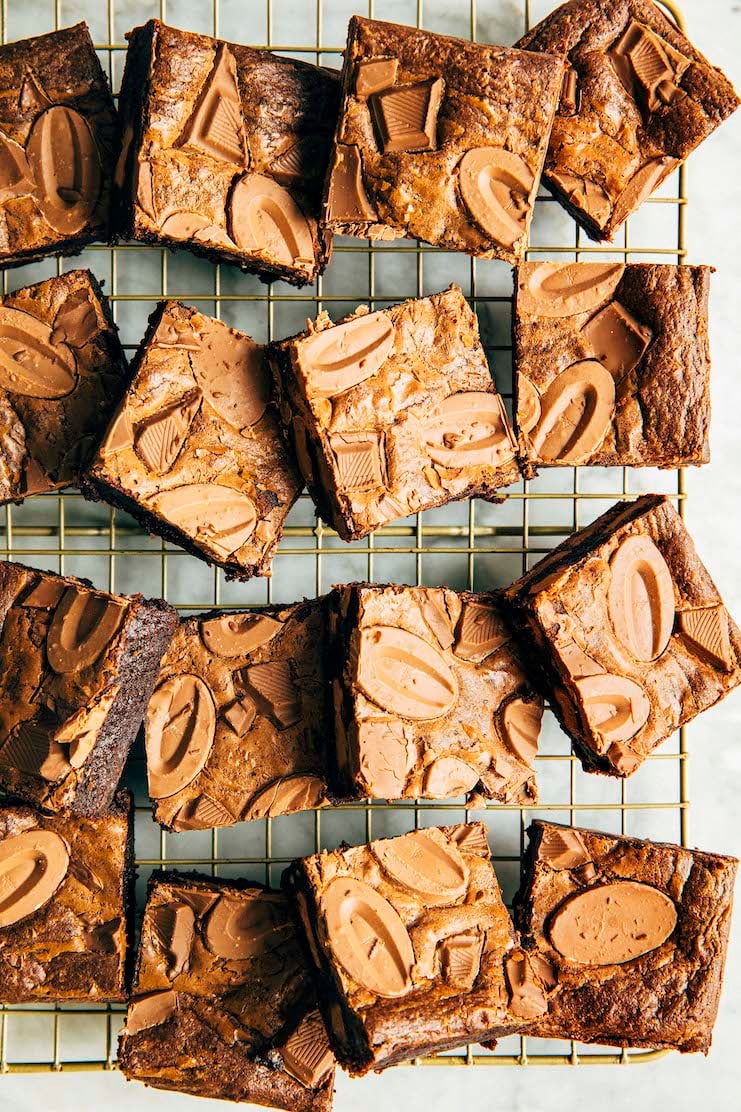
About Claire Saffitz’s Brownies
These are the Malted “Forever” Brownies from Claire Saffitz’s cookbook, Dessert Person! The brownies are super dense, fudgy, and chewy, with a distinctive flavor reminiscent of malted milk balls. This is thanks to ingredients like malted milk powder and chocolate. The recipe also uses a handful of unique techniques—like blooming the cocoa powder! and chilling the brownies!—to make them extra flavorful and chewy.
Looking for more fun brownie recipes on Hummingbird High? Check out these Chewy and Fudgy Purple Ube Brownies!
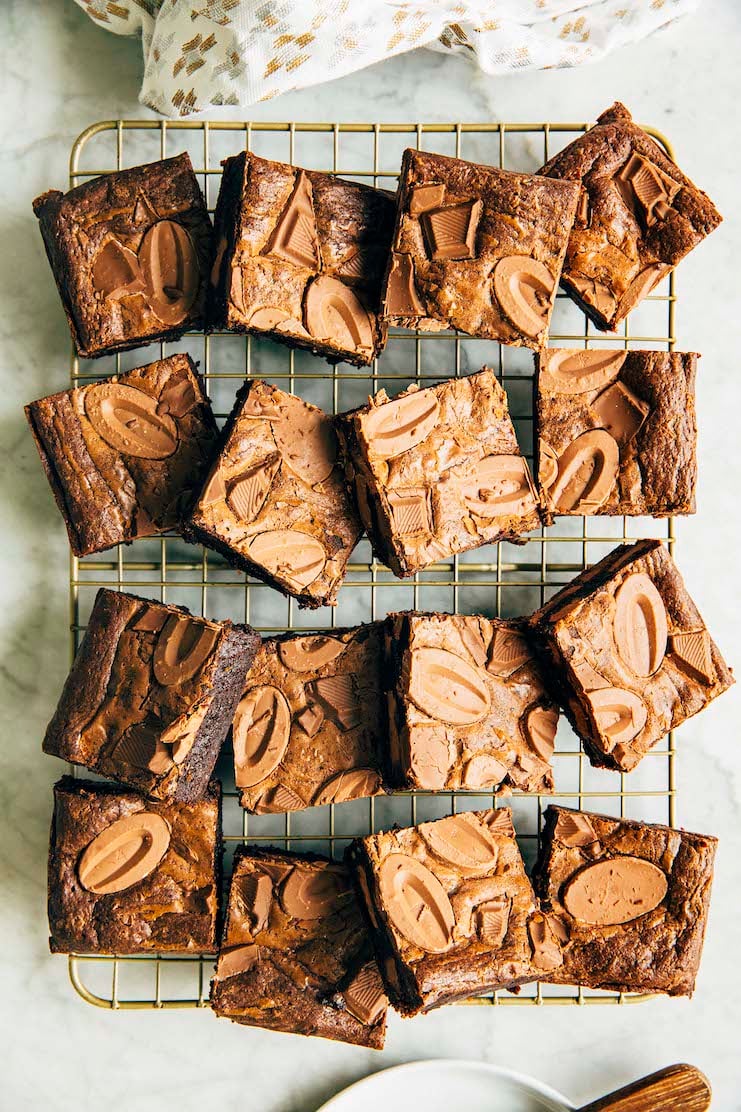
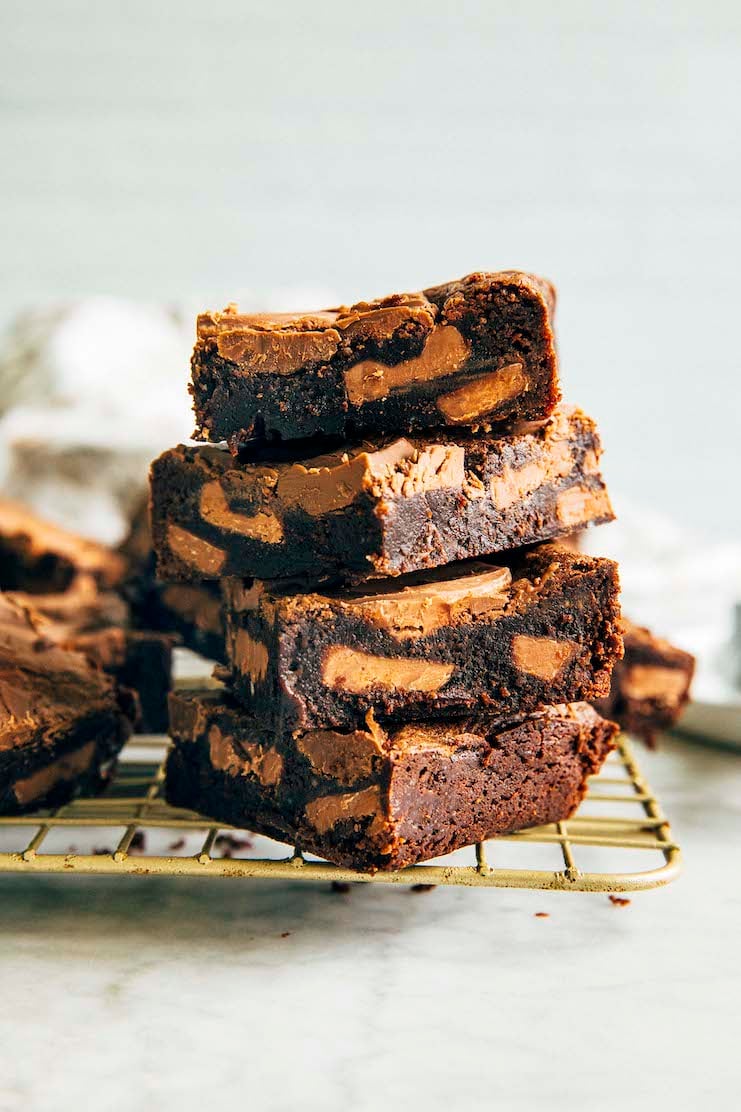
Ingredients and Substitutions
Now that I’ve convinced you to make Claire Saffitz’s brownies, let’s talk about some of the recipe’s key ingredients and any potential substitutions:
- Malted Milk Powder: I like the Carnation brand. But if you don’t want to buy malted milk powder, you can skip it or substitute 6 ounces (170 grams) coarsely chopped malted milk balls for the milk chocolate in the recipe.
- Kosher Salt: Kosher salt is the best salt for baking recipes. But you can replace the kosher salt in the recipe with table salt. Just use half the amount listed in the recipe when you do!
- Dutch-processed Cocoa Powder: In a pinch, you can use natural unsweetened cocoa powder instead.
- Chocolate (Dark & Milk): Check out my post on the best chocolate for baking chocolate chip cookies and recipes like this Claire Saffitz brownie recipe.
- Canola Oil: You can use any other neutral flavored oil in the recipe.
- Dark Brown Sugar: No dark brown sugar? Don’t panic—light brown sugar works in the recipe, too!
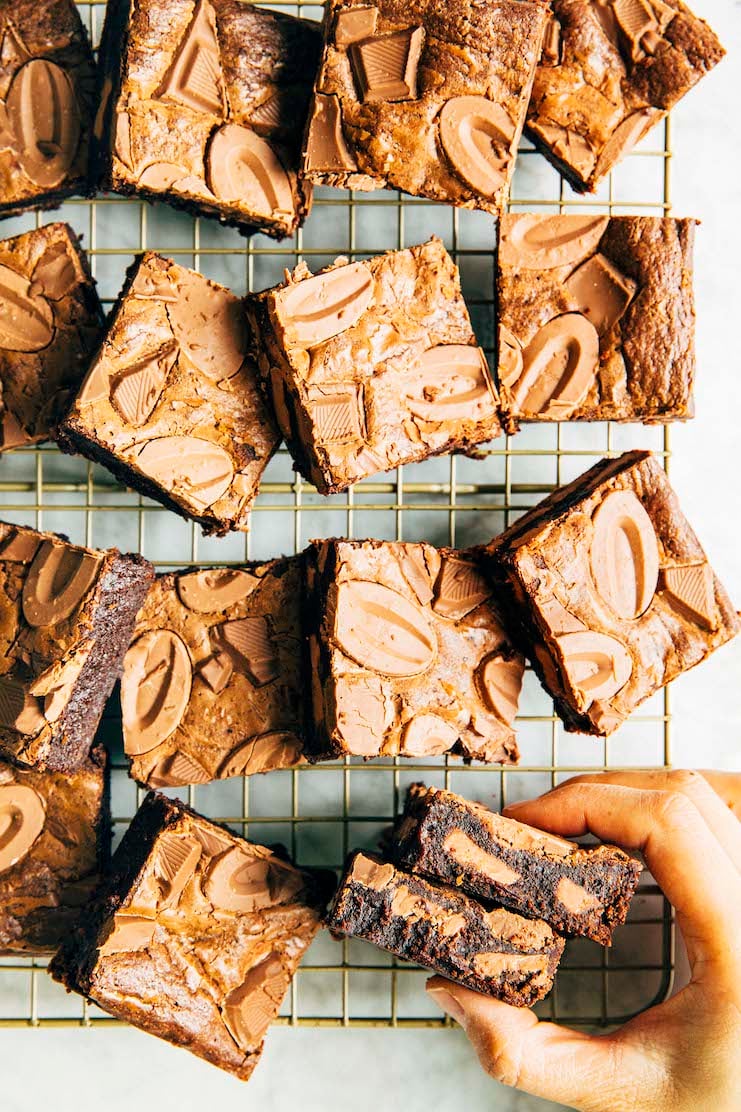
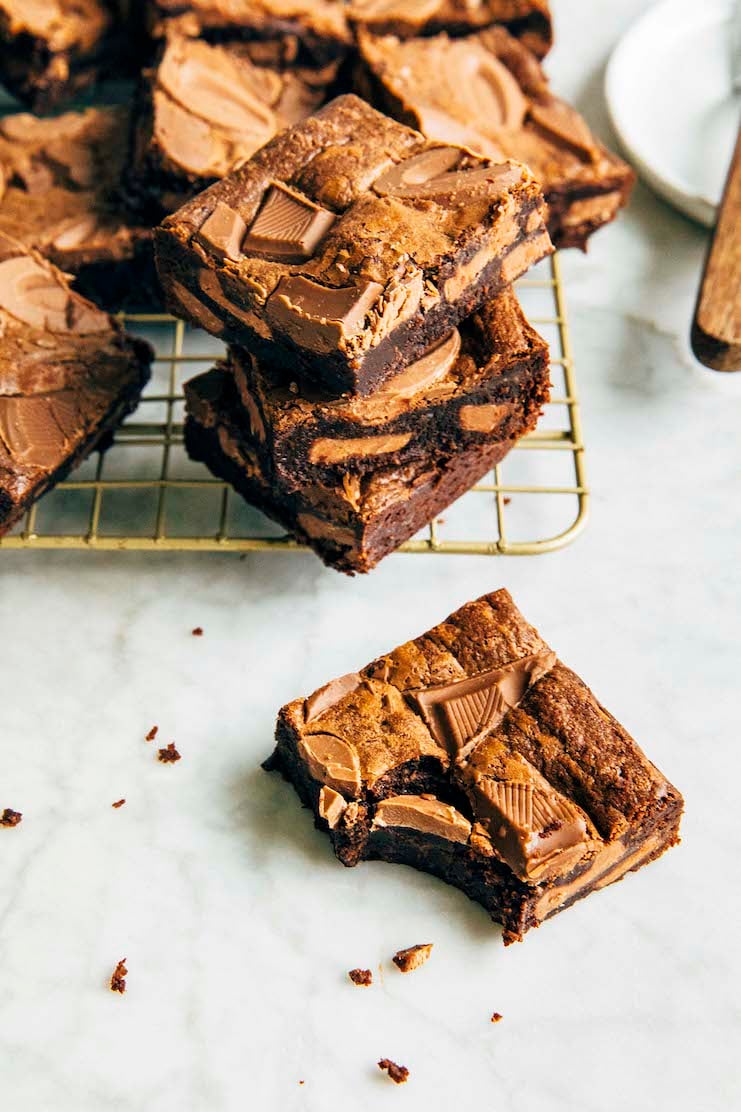
Recipe Troubleshooting and FAQ
Is it better to use a glass or metal pan when baking brownies?
Alright, here we go—when you google the answer to this question, the first few search results will tell you that it is better to use a glass pan when baking brownies. THEY ARE 100% INCORRECT. It is my *FIRM* opinion that it is always, ALWAYS better to use a metal pan when baking brownies.
Why? Glass pans are slow to heat up; however, when hot, they retain heat for much longer. This quality often results in uneven baking. By the time the interior of whatever you’re baking is done, the exterior of it is often overcooked, dry, and overly dark.
What does that mean for this Claire Saffitz brownies recipe? If you’re baking the brownies in a glass pan, they’ll continue to bake LONG after being pulled out of the oven because the pan continues to retain so much heat. That usually means dense, dry, and overcooked brownies that are not fudgy at all.
Metal, on the other hand, conducts heat. Because metal heats up faster than glass, it leads to brownies with a better rise (but without being cake) with crispier edges. And because metal pans lose heat quickly after being pulled out of the oven, your brownies will too. That means the brownies will cool faster, and they won’t be overdone. Instead, they will instead be perfectly fudgy and set. So please use a metal pan for this recipe!
Finally, if you want to be a perfectionist, choose a light colored metal pan over a dark metal pan. Dark pans absorb more heat, which, like glass, can cause the exterior of the brownies to bake too quickly. I always use pans from Williams-Sonoma’s Goldtouch Pro Nonstick line for my baking.
Can you freeze this brownie recipe?
Yes! You can freeze the baked brownies.
To freeze the brownies, individually wrap any leftover bars in two layers of plastic wrap, then a layer of aluminum foil. The aluminum foil will prevent the bars from absorbing any other flavors or odors in the freezer. Freeze for up to 3 months.
When ready to serve, transfer to the refrigerator to thaw overnight. You can eat the brownies straight from the fridge, or rewarmed in the microwave.
My Best Brownie Recipe Tips
About Prepping Yourself For Success
- When prepping the baking pan, use more cooking spray than you think you need to coat the parchment paper. The brownies are VERY fudgy and tend to get stuck on the paper if you don’t use enough spray.
And Ingredients You Need
- The brownie batter recipe states that you need 5 ounces (142 grams) of chopped dark chocolate to make the brownie batter. If you don’t have a digital kitchen scale, that’s equivalent to ⅔ cup plus 2 Tablespoons of chopped chocolate. Each piece of chocolate should be roughly the same size and shape of a regular-sized chocolate chip.
You’ll also need 10 ounces (284 grams) of milk chocolate to mix-in and top the brownies. That’s equivalent to 1 ⅔ cup of chopped milk chocolate. - I mention this in my review of the recipe below, but I added more milk chocolate to Claire’s original recipe. Specifically, I added a chopped milk chocolate topping. If you want a less sweet brownie, feel free to skip the milk chocolate topping!
Finally, My Foolproof Technique Tips
- The recipe instructs you to cook chocolate, butter, and oil together until melted. Once done, this mixture will look a little grainy (almost like split ganache). Don’t panic! Just continue following the recipe and whisk in the sugars, eggs, and remaining ingredients. Once you start whisking in the eggs, the batter will smoothen out and start to combine.
- It’s better to pull the brownies out of the oven early than leave them in too long—if you over bake the brownies, they’ll be tough. They might appear underbaked, but I promise that when they’ve cooled, they will be perfect.
Get the Recipe: Claire Saffitz Brownie Recipe
Ingredients
For the Brownie Batter
- ¾ cup (3.5 ounces or 99 grams) all-purpose flour
- 2 Tablespoons malted milk powder
- 1 teaspoon kosher salt
- ¼ cup (0.75 ounces or 21 grams) Dutch-processed cocoa powder, sifted if necessary
- ¼ cup (2 ounces or 57 grams) freshly boiled and still very hot water
- 5 ounces (142 grams) dark chocolate (between 60% to 70% cacao), from whole fèves or a high-quality chocolate bar chopped into ½- and 1-inch pieces
- 6 Tablespoons (¾ stick or 3 ounces or 85 grams) unsalted butter, chopped into 1- to 2-inch pieces
- ¼ cup (2 ounces or 57 grams) canola oil
- ½ cup tightly packed (3.75 ounces or 106 grams) dark brown sugar
- ½ cup (3.5 ounces or 99 grams) granulated sugar
- 1 large egg
- 2 large egg yolks
- 1 ½ teaspoons pure vanilla extract
- 6 ounces (170 grams) milk chocolate, chopped into 1- to 2-inch pieces
For the Milk Chocolate Topping
- 4 ounces (113 grams) milk chocolate, chopped into 1- to 2-inch pieces
Instructions
- Prep the oven and baking pan. Position a rack in the center of the oven and preheat the oven to 350°F. Lightly spray an 8-inch square pan with cooking spray and line with parchment paper, leaving a 2-inch overhang on each of the pan's sides. Spray the parchment paper, too.
- Mix the dry ingredients. In a medium bowl, whisk together the flour, milk powder, and salt.
- Bloom the cocoa powder. In a large heatproof bowl, whisk together the cocoa powder and hot water until smooth.
- Melt the dark chocolate, butter, and oil. Add the dark chocolate, butter, and oil to the bowl with the cocoa powder and water. Place the bowl over a medium, heavy-bottomed saucepan filled with a few inches of simmering water (be sure the bottom of the bowl does not touch the water).Cook over medium heat, using a heatproof rubber spatula to stir the mixture and scrape the sides of the bowl occasionally, until the chocolate and butter have melted and combined, about 5 minutes. Remove the bowl from heat, seat on a wire rack, and cool to lukewarm.
- Add the sugars, eggs, and vanilla. Once lukewarm, whisk the sugars into the chocolate mixture. Add the egg, egg yolks, and vanilla and whisk until combined.
- Add the dry ingredients and milk chocolate. Sprinkle the dry ingredients over the batter all at once and use a rubber spatula to mix until combined. Once combined, continue mixing for 1 minute more. Add the milk chocolate and mix until incorporated throughout the batter.
- Assemble the brownies. Pour the batter into the prepared pan and use an offset spatula to smooth the top. Sprinkle the chopped milk chocolate for the topping on top of the batter.
- Bake the brownies. Bake for 25 to 30 minutes, or until a skewer inserted into the center of the brownies comes out with a few crumbs attached.
- Cool the brownies. Cool completely on a wire rack, about 1 hour, then refrigerate until the bottom of the pan feels cold, about 1 hour more.
- Serve and store. Run a butter knife or offset spatula along the edges of the pan and use the overhanging foil as handles to lift the brownies out of the pan and onto a cutting board.Slice into 2-inch squares, garnish with flaky salt, and serve.The brownies can be stored in an airtight container or zip-top bag at room temperature for up to 3 days.
Notes
- Recipe adapted from Claire Saffitz’s Dessert Person. Scroll down to see my notes on how I specifically adapted her recipe!
What I Really Think Of Claire Saffitz’s Brownie Recipe
I’m going to be honest with you guys—this is not my favorite brownie recipe. It’s good, but not great. I like milk chocolate, but when combined with the other chocolate elements in Claire’s recipe, it was almost too much. Because of the milk chocolate, I found her brownies to be overly sweet. I realized I much preferred brownies made with dark chocolate.
Another thing I didn’t like about her recipe? It was super fussy and more time consuming than it should have been. Although I liked her technique of blooming the cocoa powder, I didn’t think that her technique of chilling the brownies was worthwhile. The brownies were plenty chewy already (especially since she instructed you to mix them for longer than what’s normal).
Finally, of all the brownies I baked this month, Claire’s recipe made the least appetizing-looking brownies on many levels. First, the batter was unappealing. At several points of the recipe, I was worried it had split like ganache. Although she does warn you that the batter won’t come together until after the eggs are added, no other recipes had this issue.
The finished product itself had a lot to be desired. Other brownie recipes I baked had shiny chocolate tops that flaked like paper when sliced. Claire’s brownies, on the other hand, had a dull and matte sheen. They were the only brownies that didn’t flake when sliced. I think it has to do with the malted milk powder in the recipe—I noticed bakers who had made the recipe but omitted the milk powder had that shiny top. But I was reluctant to leave it out of my version since Claire hyped up the ingredient so much!
Changes I Made To Claire Saffitz’s Brownies
I made this recipe three times before publishing this version of it on Hummingbird High. The first time, I’d followed the directions exactly as they were written in her cookbook. The next two times, I made some subtle technique changes that I thought would lead to a more successful result. Here’s a summary of everything I changed below:
- Added water to the Ingredients List. The ingredients list in her book doesn’t list boiling water as an ingredient in the recipe. This is a pet peeve of mine—I personally think it’s important to have water listed in the ingredients, especially if it’s meant to be used at a specific temperature.
In her YouTube video for the recipe, Claire also mentions that the amount of water listed in her book recipe is incorrect/a typo. Specifically, the volume measure is correct while its weight measure is incorrect. I made sure to include the correct volume and weight measure in the recipe you see above. - Instructed you to line the baking pan with parchment paper as opposed to aluminum foil. In the original recipe, Claire instructs you to line the baking pan with aluminum foil instead of parchment paper. When I did this the first time I made the recipe, it was a mess. Despite greasing the foil generously, the brownies stuck to it like crazy! I legit had to peel off the aluminum foil from the bottom of a sliced brownie. It was pretty unappetizing. For my next two rounds of baking the recipe, I switched to parchment paper and found that I no longer had any issues.
- Added more milk chocolate to the original recipe to distract from its lackluster top. The food stylist in me was so heartbroken by the matte, dull top of Claire’s brownies. So I tried to make them “prettier” by adding lots of chopped chocolate on top. I think it worked? They definitely look more appetizing IMO. That being said, adding more chocolate to Claire’s recipe leads to a sweeter brownie. So if you’re someone who wants their brownies to be less sweet, proceed with caution!
Did you make this recipe?
Please leave a comment and rating for the recipe using the form below!
Your ratings make it easier to find the recipe online, and I’m always looking for ways to improve Hummingbird High.

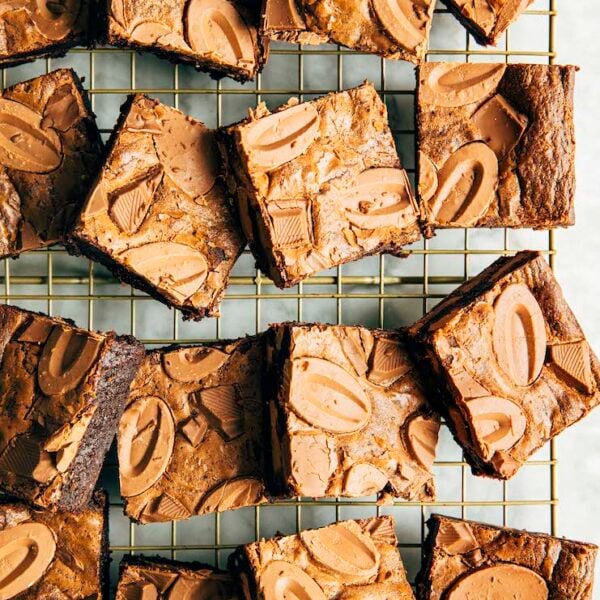
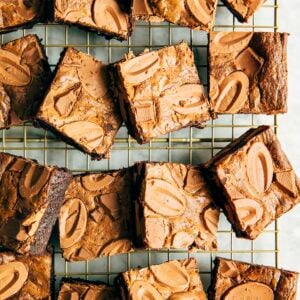
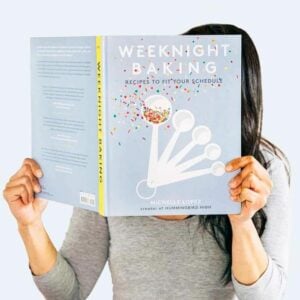

Hi Michelle,
I just read through the recipe, and it sounds intriguing. I appreciate your tips and adjustments/comments at the end. Do you have any pointers on how to slice through the brownies cleanly? Your images show a very precise cut, and in my experience, when I try to cut through brownies with chocolate chunks/feves/toppings, I always get a ragged cut. I look forward to making this recipe. Thank you!
OMG, I am SO glad you asked this. Slicing brownies without smushing them and/or ruining the toppings is a party trick—I plan on doing an IG/TikTok tutorial on how to do it soon! But some tips for now: use a hot serrated knife (dip the blade in a tall glass of hot water, and wipe it dry before slicing), and use a sawing motion to create clean slices.
Thanks for posting an honest review of these. I must admit that I came here looking for your opinion on these, and I was glad to find that it was honest. I agree – I made these late last year (using Claire’s original recipe) and also found them a bit underwhelming. I thought the malted flavour wasn’t enough to call them malted brownies. I much much much prefer the texture and dark chocolate flavour of your supernatural brownies (which are one of my go to brownies!). Thanks for being honest on this one. I’ll be back to read about other brownies you bake this month!
I’m having issues with these browies coming out a little too cooked around the edges and a little undercooked in the middle. Maybe my oven runs hot? Should I just try lower temperature and longer cook time?
By the way, these are delicious! Love the addition of chocolate on top.
hi! what kind of pan are you baking the brownies in? with a glass pan, the brownies tend to overcook on the edges and stay raw in the middle due to the way glass conducts heat.
Hi Michelle, thanks for the reply! No, it’s actually a metal pan.
Is it a dark colored metal pan, or a light colored metal pan?
It’s this guy. https://www.amazon.com/Wilton-Perfect-Results-Premium-Non-Stick/dp/B07328J6QJ/ref=sr_1_1?keywords=wilton%2B8×8%2Bpan&qid=1663185495&sr=8-1&th=1